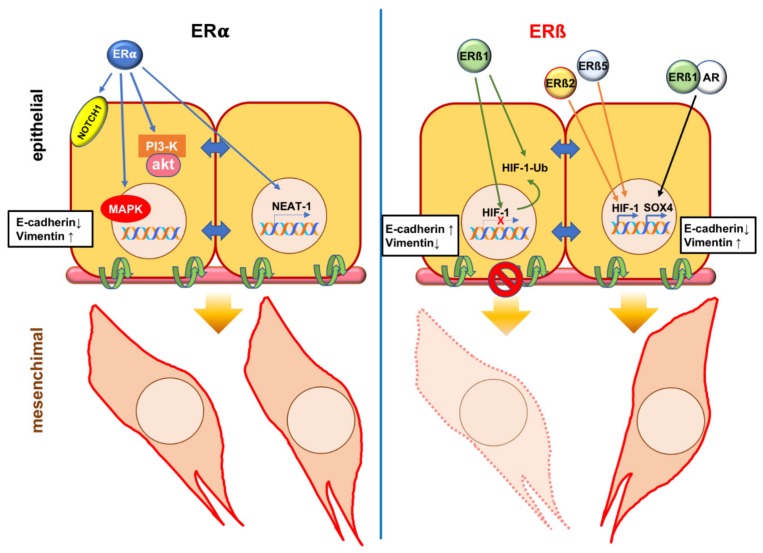Figure 2.
Estrogen receptor (ER) α or β control the epithelial mesenchymal transition (EMT) program in prostate cancer (PC). Left panel: the ligand activated ERα might induce EMT through transcriptional up-regulation of Neurogenic locus notch homolog protein 1 (NOTCH1) [71] or nuclear enriched abundant transcript 1 (NEAT-1) [70]. Phosphoinositide 3-kinase (PI3-K)/AKT and Ras/Mitogen activated protein kinase (MAPK) pathways both induce EMT of PC [25,26]. As the ligand-bound ERα triggers activation of both these pathways in target cells [27,28,29], it might be argued that such activation leads to EMT in PC. Right panel: the ligand activated ERβ1 hinders EMT by repressing the transcription of hypoxia-induced factor 1α (HIF-1α) and promoting its degradation by proteasome [93]. By stabilizing HIF-1α, ERβ2 and 5 promote EMT [46]. Under certain conditions, ERβ1 could dimerize with androgen receptor (AR) upon being challenged with estrogens. Sex determining region Y box 4 (SOX4) up-regulation follows and this event leads to EMT in PC [102].

